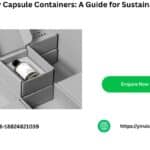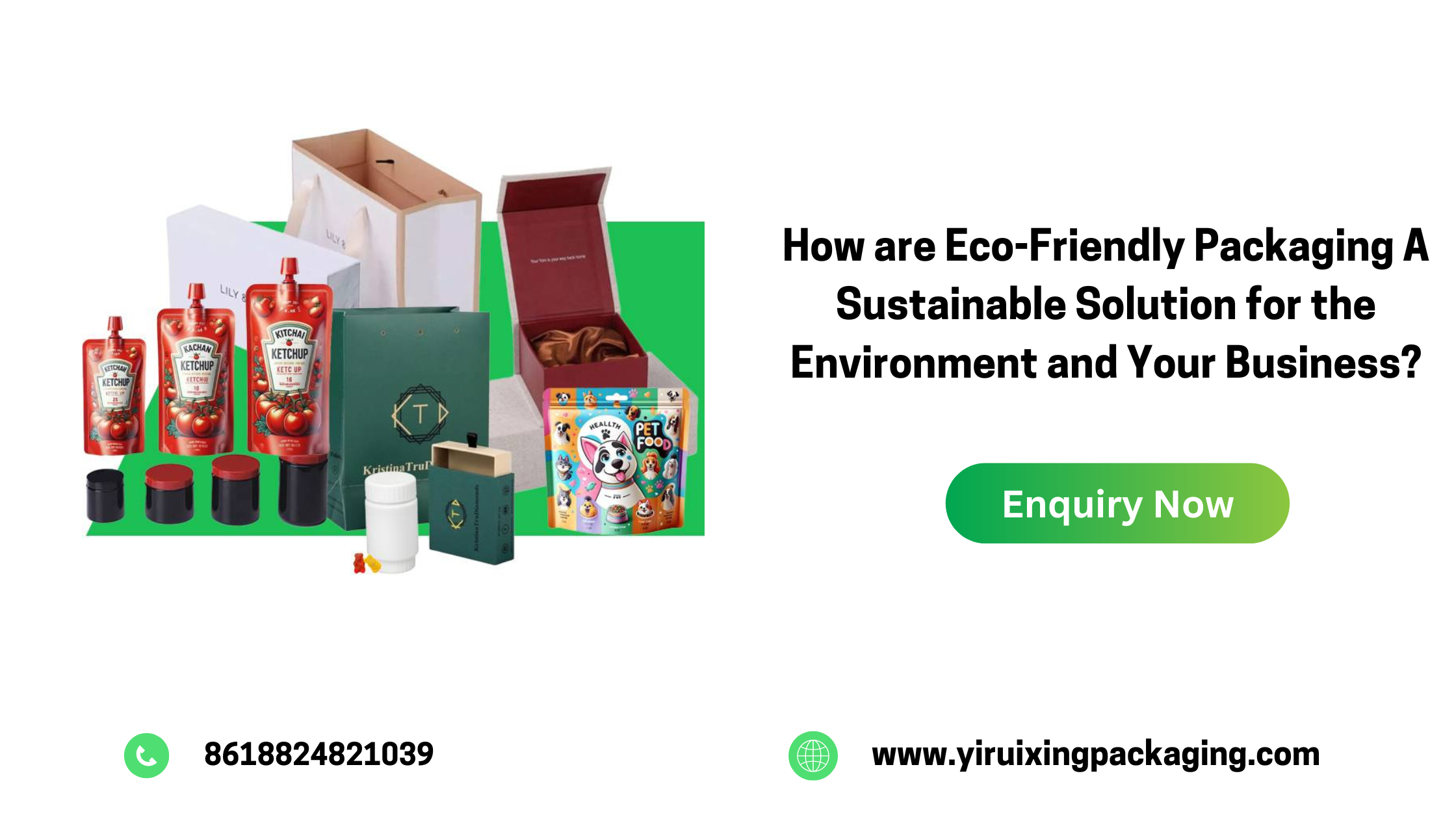Eco-Friendly Alternatives to Plastic Packaging for Restaurants – For many years, the most commonly used packaging solution for restaurants was plastic because it was lightweight, cheap, and strong, but the impact on the environment due to plastic waste cannot be ignored if we want to help the environment. Plastic is contributing to an ecological crisis. We have plastic in landfills, plastic in oceans, and plastic in our ecosystem as a whole. More and more restaurants are considering eco-friendly alternatives to plastic packaging for the sake of the planet and because their community is demanding it.
Table of Contents
ToggleMaking the switch to eco-friendly packaging is not just another trend; it is good for business. With global efforts in place for collective reduction in single-use plastics, restaurants that make the change first can gain leverage in a market where single-use plastics will become less desirable. What are the best options for eco-friendly alternatives to plastic packaging? Let’s explore the preferred sustainable packaging options for restaurants.
List Of Eco-Friendly Alternatives to Plastic Packaging for Restaurants
1. Biodegradable Packaging
Biodegradable packaging provides a level of assurance that it will break down in the natural environment, usually fully within a few months. Biodegradable is made from organic materials, and uses materials like starch, cornstarch, wheat, and sugarcane. When disposed of correctly, biodegradable packaging will decompose fully, leaving no toxic residues. Biodegradable options –
Cornstarch Containers – Not heavy and similar to what we use with plastics.
Sugarcane Bagasse Boxes – Similarly, from sugarcane, it is fibrous from the leftover sugarcane, and works well with hot foods.
Wheat Straw containers – A byproduct of wheat production that is durable and compostable.
These choices are often extremely attractive to consumers who prioritize the environment, given that they are suitable for hot & cold foods, but it is important to understand how to dispose of them. Biodegradable packaging can be more challenging to dispose of properly than organic waste because biodegradable packaging typically needs to be composted to break down.
2. Compostable Packaging
Compostable packaging is better than biodegradable packaging. Technically, it not only breaks down but also becomes nutrient-rich compost when it is processed at a commercial composting facility. Biodegradable packaging is often unclear whether it breaks down in a landfill or not, and there is a concern that the biodegradable component may degrade, convert, or partially convert to microplastics. With composting, you can trust that it will all go as intended. Ideal compostable materials –
PLA (Polylactic acid) – A plant-based plastic alternative, made from fermented plant starch (usually corn). Great for cold drinks and salads.
Palm leaf plates – Nature-made, sturdy, and compostable in your backyard compost.
Paperboard with water-based coatings – For example, bowls, trays, takeout boxes)
Restaurants will have to ensure their customers understand not to throw their compostable packaging in the landfill and work with waste management services that support composting.
3. Recyclable Packaging
Recyclable packaging is still a legitimate eco-friendly option, especially in communities where recycling is well-supported. Materials that have been recycled, processed, and reused all decrease the amount of virgin resources needed. Popular recyclable materials –
Paper and cardboard – Generally accepted in most recycling programs; commonly used for burger boxes, coffee cup sleeves, and cartons.
Aluminum containers – Good for keeping food hot, fully recyclable.
Glass jars and bottles – Great for sauces, beverages, and desserts.
However, food contamination can prevent recyclability. An example would be greasy pizza boxes or containers covered in leftover sauce that cannot be accepted. It’s important to have clear communication on rinsing and sorting of the recyclables.
4. Reusable Packaging
While reusable packaging is not feasible for all restaurant models, it’s typically good practice for dine-in establishments and subscription meal delivery services. Reusable packaging made from stainless steel, bamboo, or tempered glass is durable and can last a long time. Benefits of reusable packaging –
Huge Waste Reduction – Don’t underestimate how beneficial it can be for operations that are high volume.
Reduction of Cost – Even if you incur a large upfront cost, it takes some time for the cost to go down.
Building Brand Loyalty – Customers like brands that show they care about sustainability.
Many restaurants encourage guests to bring their containers or use return-for-refund: “paid” for new containers.
5. Edible packaging
Edible packaging is the newest product that has come out in sustainability. Edible packaging is packaging you can eat, made from seaweed, rice, potato starch, or other food-grade material. Examples –
Seaweed Wraps – Are used for sushi, sandwiches, or as wrappers.
Rice Paper Sheets – Are used for spring rolls or desserts.
Wafer Cups – Are used for serving coffee or ice cream.
Although still in the early stages and limited in functionality, edible packaging has promise for waste reduction in many unique ways.
Best Practices for Transitioning to Eco-Friendly Packaging
Transitioning to sustainable packaging is not as easy as just replacing plastic with paper. It requires a deliberate approach –
Understand your waste management options – Choosing packaging products made from materials suitable for recycling or composting in your city is critical.
Educate your staff and customers – Clear labelling and staff education will encourage proper disposal practices.
Choose reliable suppliers – Work only with suppliers that provide certificates and commitments to sustainable sourcing.
Start by piloting – Introduce a few environmentally friendly items and gauge customer response and effect on your operations.
Restaurants that complete the transition to sustainable packaging see overall customer satisfaction improve, in addition to brand perception. Sustainable packaging will likely save money on waste disposal as well.
Conclusion
Moving away from plastic packaging to eco-friendly options is not only beneficial to our planet, but it will also benefit businesses. When implemented thoughtfully, restaurants can reduce their environmental impact while effectively meeting modern consumer expectations. If you’re looking for eco-friendly packaging solutions, Yiruixing Packaging has you covered. They have eco-friendly packaging options for restaurants and foodservice.
FAQs Eco-Friendly Alternatives
Is eco-friendly packaging more expensive than plastic?
Sometimes, yes, eco-friendly materials can require a higher upfront cost. However, other costs you gain in return – such as improved brand representation, customer loyalty, and the reduction of environmental impact – may balance your initial costs.
Can compostable packaging be thrown away in the trash?
Yes, technically. However, that strips it of its utility. Compostable packaging should be disposed of in a commercial composting or home composting system to break down. In a landfill, compostable packaging may break down, but only very slowly due to a lack of oxygen.
What’s the difference between biodegradable and compostable?
Biodegradable simply means that the item will eventually break down over time. Compostable means that the item will break down into nutrient-rich compost under the right conditions, with no negative residue.
Do consumers want to pay more for sustainable packaging?
Surveys suggest a larger portion of consumers, particularly those in urban areas or younger demographics, are willing to pay slightly more for eco-friendly packaging.





